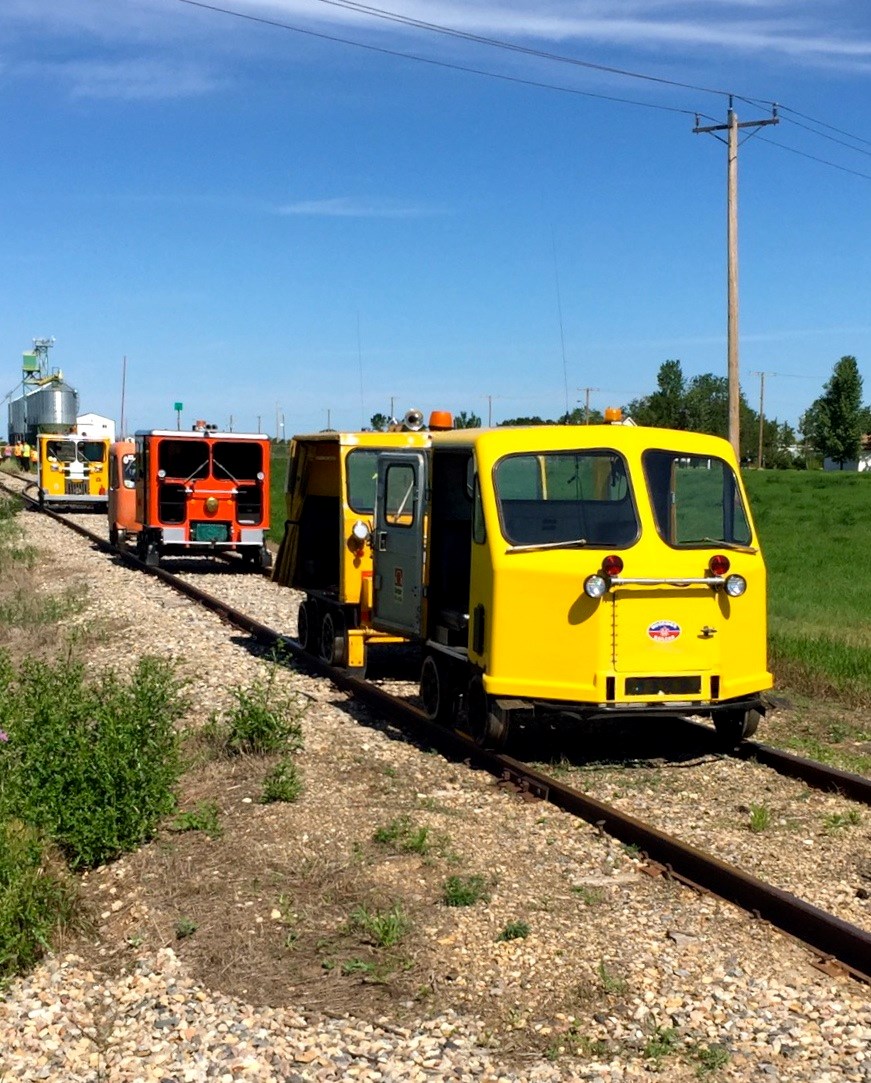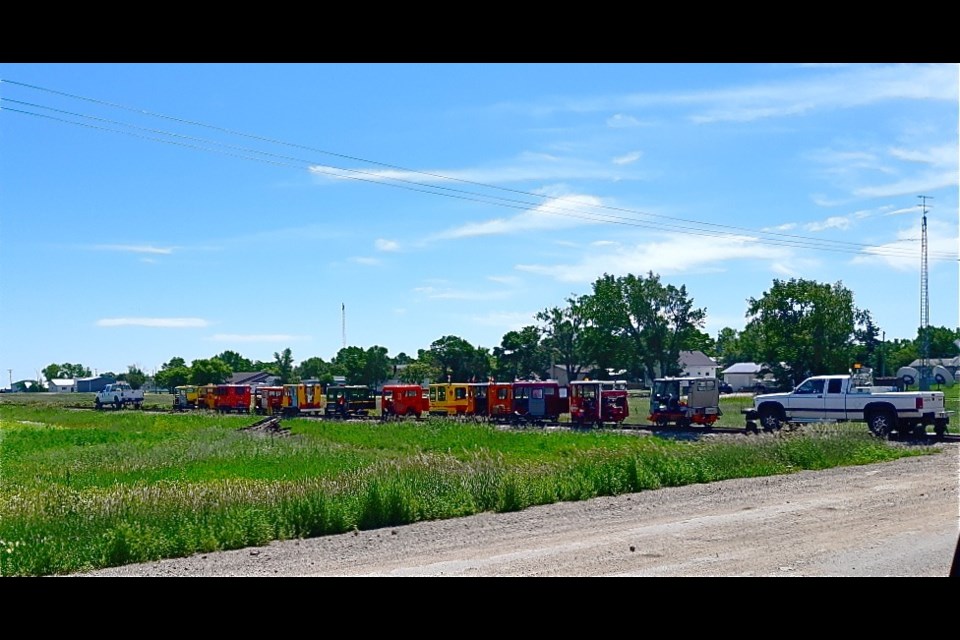A chain of old, fancy, colourful little railcars cruising down the Long Creek Railroad last Monday wasn’t a mirage. That’s North Central Railcars tour that once again made it back to the Estevan area this year.
The excursion, which brings together the owners of small railcars, also known as jiggers, started on July 8 near Macrorie, Sask., where a group of over 30 people put their cars on Big Sky Rail and headed out, first to Beechy and later to Elrose.
The small cars, used for the tour, were originally mainly used by maintenance workers, who loaded their tools and travelled on the tracks to locations that needed repairs until the late 1970s-early 1980s. The manufacturers stopped producing these historic pieces a while ago, so they became quite rare. There are also not too many railways for the railcar club to take their gems onto for a drive. Which means that every day or two, excursion participants need to put their cars on the trailers and haul them to the next location.
Thus, this year after the first couple days in Macrorie area, the club moved over to Swift Current to run the Great Sandhills Railway between Cantuar and Leader. Then they drove to Shaunavon to run from Shaunavon to Ponteix and from Shaunavon to Consul and back.
On July 14, the group headed to the Energy City, and on July 15 the beautiful train could be spotted on the Long Creek Railroad going from Estevan to Tribune, stopping in Torquay for lunch and then coming back to Estevan.
Lifestyles talked to Mike Ford, the long-time excursion director for the North Central Railcars Ltd.
“The ride went really well. It was a sunny day, a little bit windy in the morning, (but all was well),” said Ford.
Similar tours are organized every few years, to make sure it doesn’t get old. And Ford, who purchased his car in 1996, has been running it since 1997 and has put various excursion together since 2001, says that for him it’s always great.
“It never gets old, because the scenery usually gets little different, the weather looks different, and the group of people you get to ride has a tendency to change. You get some of the same people but you usually get about a quarter to a half of new ones, people who haven’t seen it before,” said Ford.
This year’s group of railcar travellers was comprised of people from British Columbia, Alberta, Saskatchewan (Eatonia), Manitoba, Ontario and Quebec, who were joined by folks from the United States, basically from Idaho, Illinois, Minnesota and Indiana, with one car coming from Arizona.
Tourists not only were enjoying their rides and the scenery around them, but they also tried to share what they know about jiggers with people they met on the way.
“Every time we stop either for a break or lunch, we invite everybody to come over and look at our cars, have kids sit in them, take pictures. We are pretty friendly and we want to share this little piece of history with everyone,” said Ford.
He noted that younger people usually don’t know what these cars are, and older people are surprised to see them because they probably haven’t come across one since the times when they were kids.
Some of the cars that joined the excursion could go as fast as 55-65 kilometres per hour, but when on the tour the train travelled at about 40 kilometres per hour speed. Most cars had a driver and one passenger.

Jiggers are individually powered, and most engines run from 16-horsepower to about 22-horsepower with most being gasoline-powered and a few larger running on diesel.
After Estevan, the excursion lost a couple of participants and continued on into Manitoba. They made it to Morden, Man., to run the Boundary Trail Railway to Manitou, and then moved closer to Winnipeg.
The tour will come to an end in the U.S. with a beautiful ride on the North Shore Scenic Railway between Two Harbors and Duluth, Minn., next Monday.
When not touring the club that is centred around the narcoa.org website stays in touch, reaching out to each other for help with fixing or developing their railcars.
“It’s a pretty unique hobby, and we have a lot of people that have a lot of experience and knowledge in electronics and engine, so if you have a problem, you usually can find an answer that you need to fix your problem,” said Ford.




